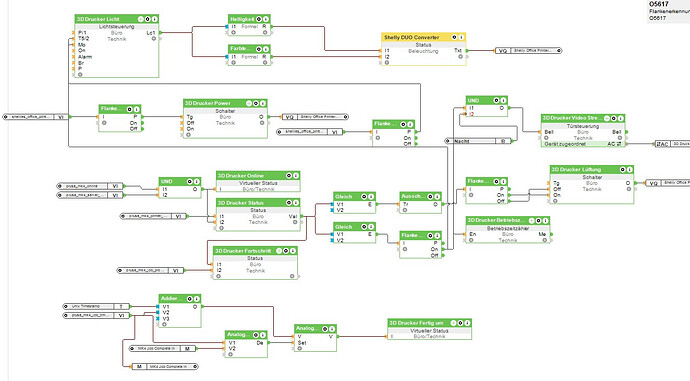Okay here goes a long multiple question topic. I can be more specific if needed on each topic if needed.
I have a rather complicated network and automation setup at my facility and am looking at adding 1-3 robots to the mix. I have a 440, 1100, 15l, and a Haas VF2 that are all networked. I post all of my code to a NAS unit since I want all of my files to be backed up both onsite and offsite. This provides a nice central backup solution to deal with all machines.
My NAS also runs virtual machines that are hosting node red, mqtt and homeassistant which provide me a nice local method of automating things. Again, a central solution for doing snapshots and backups.
For example, many times before leaving for the day I will start long running parts. Cycle times that are greater than 10 hrs. My node red server will send a query to the Haas that asks for a serial number and it will wait for a response. If the machine responds the automations are delayed. Once the haas does not respond after 20 mins the shop will dial the hvac back, shut the air compressor off, shut the auto drain off and arm the interior motion sensors in the shop areas. This is done with a very simple text string.
Does Pathpilot respond to certain commands via ethernet that ask for a status or serial number? How about the robot integration? Is there a specific list of commands and expected responses documented anywhere? I would like to trigger certain things based on statuses on the machines.
Have there been any changes to the file sharing options in Pathpilot? Specifically having the ability to grab a file from the NAS vs pushing the file to the Tormach. I realize you can do an NFS share but I also dont want to change anything in Pathpilot or run into any issues during an update, deleting the share or losing the drive upon reboot etc.
It seems Dropbox isn’t working anymore, and honestly I would rather not add any extra stuff to a machine controller. I would rather do that via my NAS and a mounted drive.
Lastly, I am liking the camera option. I really like the fact it saves video for estops and such. Is there an rtsp/rtmp method of viewing the video stream even if it is running behind? Is there an option for live view or something I can plug into my camera server?
